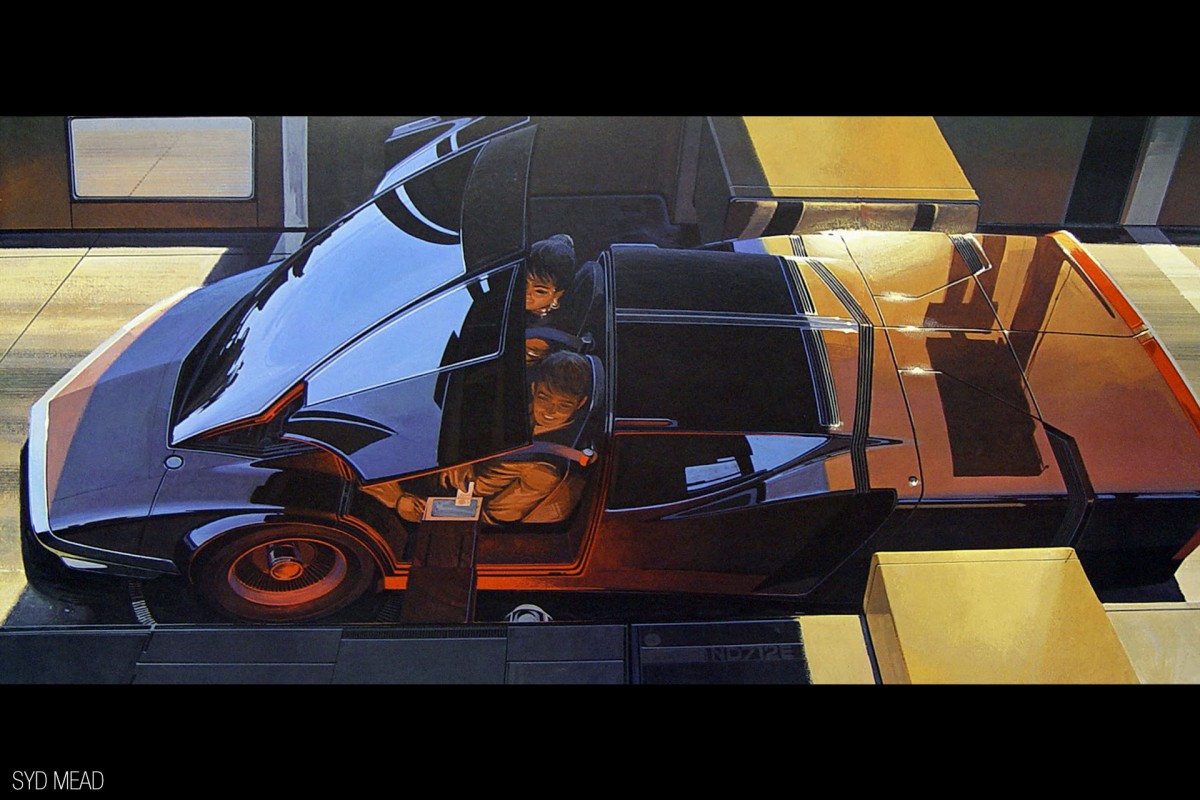
Remember when you were 10 and all the cars you drew could fly, the wheels were bigger than the doors and you thought a robot would be serving you breakfast by the age of 15? Anything was possible. Well, here’s a guy who did all that as a kid and just carried on drawing. Out-there cars, incredible spaceships, lavish buildings, strange new worlds – for over 50 years, Syd Mead has been making our dreams virtual reality. He’s defined our collective vision of what could be in store for us all; if you’ve watched Blade Runner you will have walked a mile in this man’s mind. Ever looked at the bikes from Tron and wondered who first saw them in their head? Syd did.
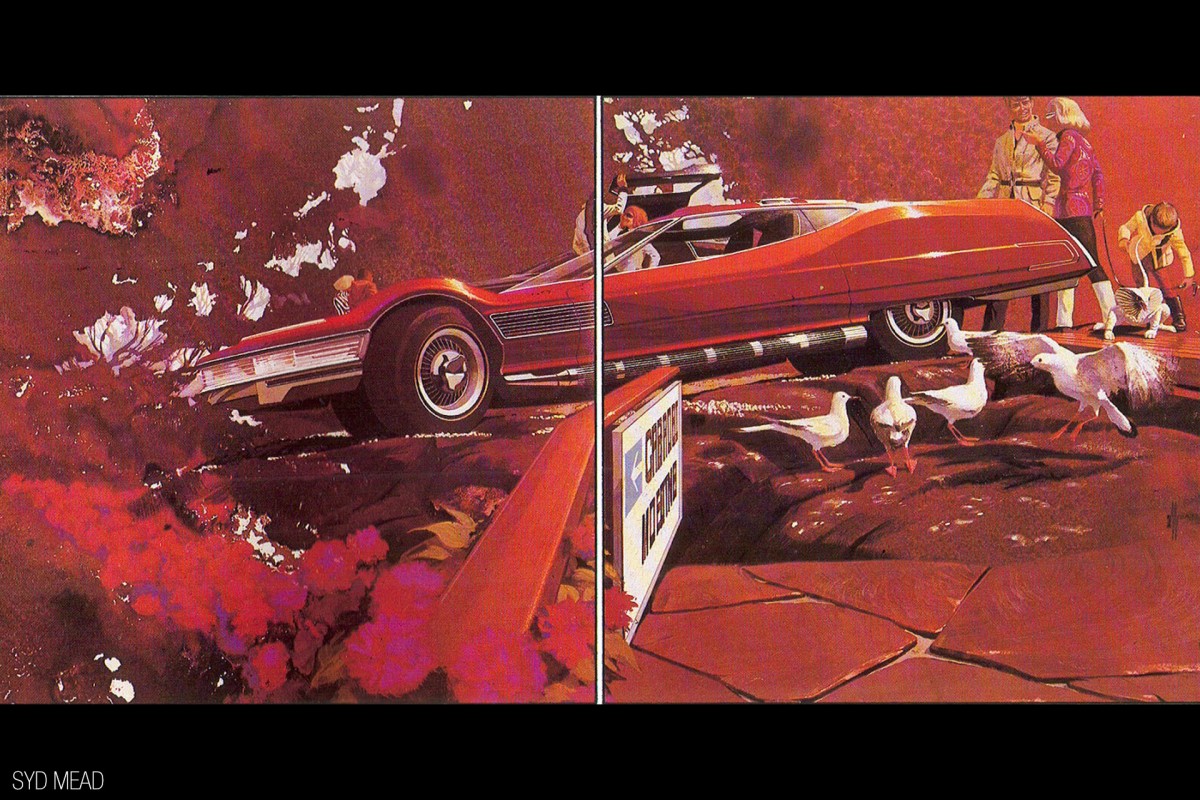
You need to take a look into the world of Syd Mead. If you’ve never heard of him, Syd has designed cityscapes and vehicles for the film industry, dreamt electric dreams and created worlds that may never be built – but should be. That’s why he’s part of our inspiration theme. Welcome to the wild ride that is Syd Mead’s mind; come take a trip through the past and into the future…
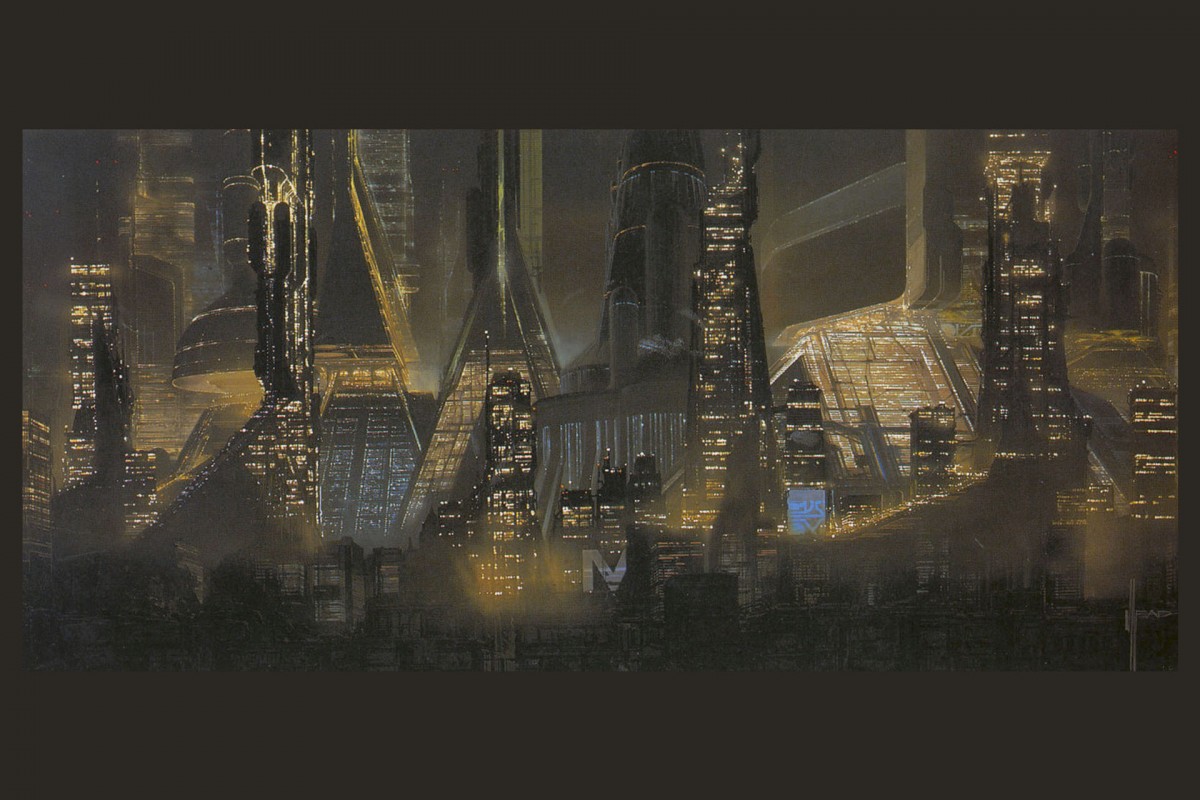
Jonathan: “As a teenager in the America of the post-war period, you must have been living through an exciting time: the rapid evolution of technology in the home and the country’s obsession with space.”
Syd Mead: “Technology as I grew up was the things I saw: a mangle ironer machine or mom’s Servel ‘silent’ refrigerator. At six I had a cutaway of the Hindenberg dirigible and I was sketching teardrop-shaped cars before drawing rocketships in grade school. As a child I had no idea that design was a profession, but I knew that somehow I would earn my living being paid to draw. In high school I started a graphic novel, drawing and coloring with Prismacolor pencils.”
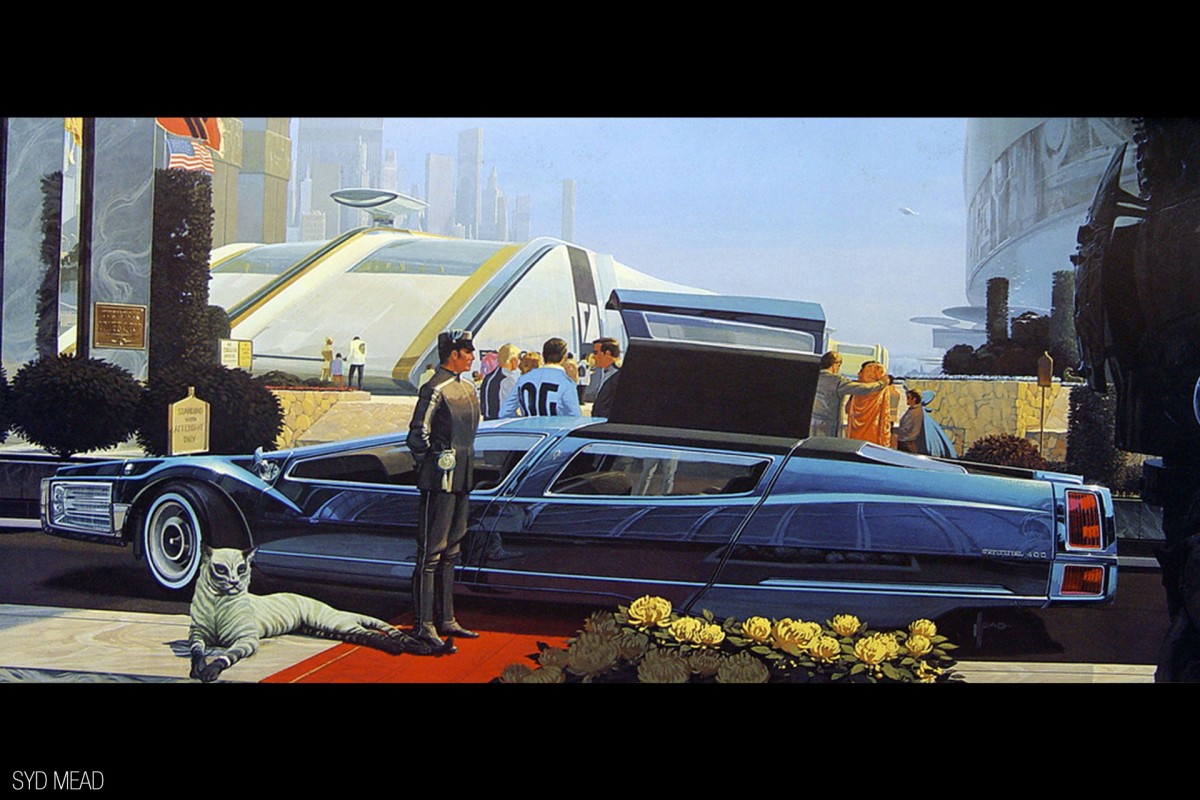
Jonathan:“How about sci-fi? Bearing in mind what a phenomenal impact you’ve had on it, were you a fan of the genre from the beginning?
Syd: “My father read Buck Rogers and Flash Gordon books to me before I could read; I read Robert Heinlein and Isaac Asimov as I progressed through high school, but was never a real fan of sci-fi. The ‘future’ look for me was the bullet-nosed Studebaker Starlight coupe from the late ’40s – a remarkable design at the time. I later worked as a consultant with its designer, Raymond Loewy.”
Jonathan: “The father of industrial design? We’ll come to that! You made art into a career early, before you joined the Army. But then your next step was pretty bold!”

Syd: “I’d enlisted in the Army at 19 and by then I’d already started my salaried career doing animation characters and watercolor backgrounds. I was becoming aware of contemporary car design – the Lincoln Continental Mark II had been announced in the car magazines and I sent comments to chief of design, John Reinhart, then at Ford Motor Company. He returned my letter and advised that ‘if I was interested in car design’ I should consider Art Center in Los Angeles.”
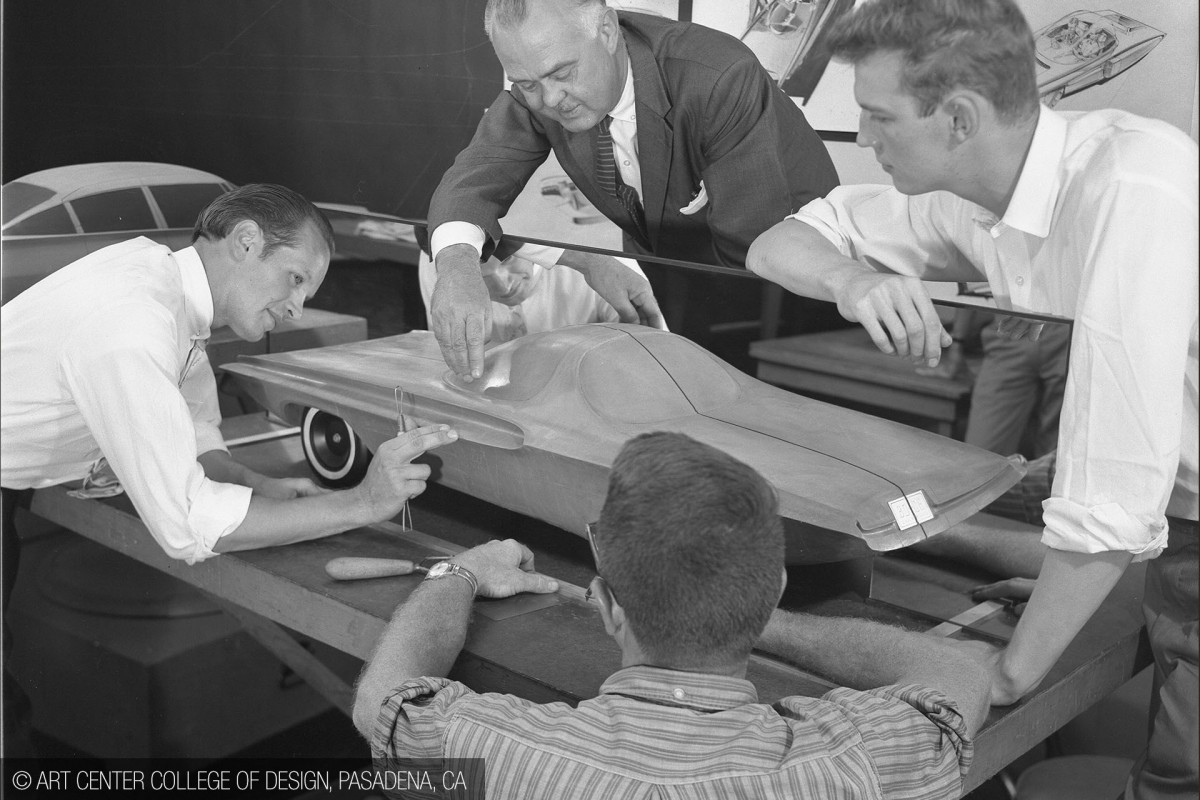
Jonathan: “The list of people who have gone to Art Center College Of Design in Los Angeles is brain-melting. The auto industry is pretty much run by its alumni (people like McLaren’s Frank Stephenson), and then there are countless film directors and designers. You were in there at a pivotal time for the school – and then John Reinhart came up again?”
Syd: “The most valuable skills I learned at Art Center were painting with gouache and knowing how to schedule design and artwork jobs to a deadline. I graduated in June of 1959 with extreme distinction and went to work for Ford’s Advanced Styling Studio in Dearborn, under Elwood Engle. I don’t recall any specific ‘project’ that prompted Elwood to hire me, but I was very prolific and exhibited a degree of originality that sparked his interest. I completed the first United States Steel Concepts book under the direction of John Reinhart, who was now the Automotive Marketing Manager for United States Steel in Pittsburgh. I did all the page layouts, artwork and typography in 30 days.”
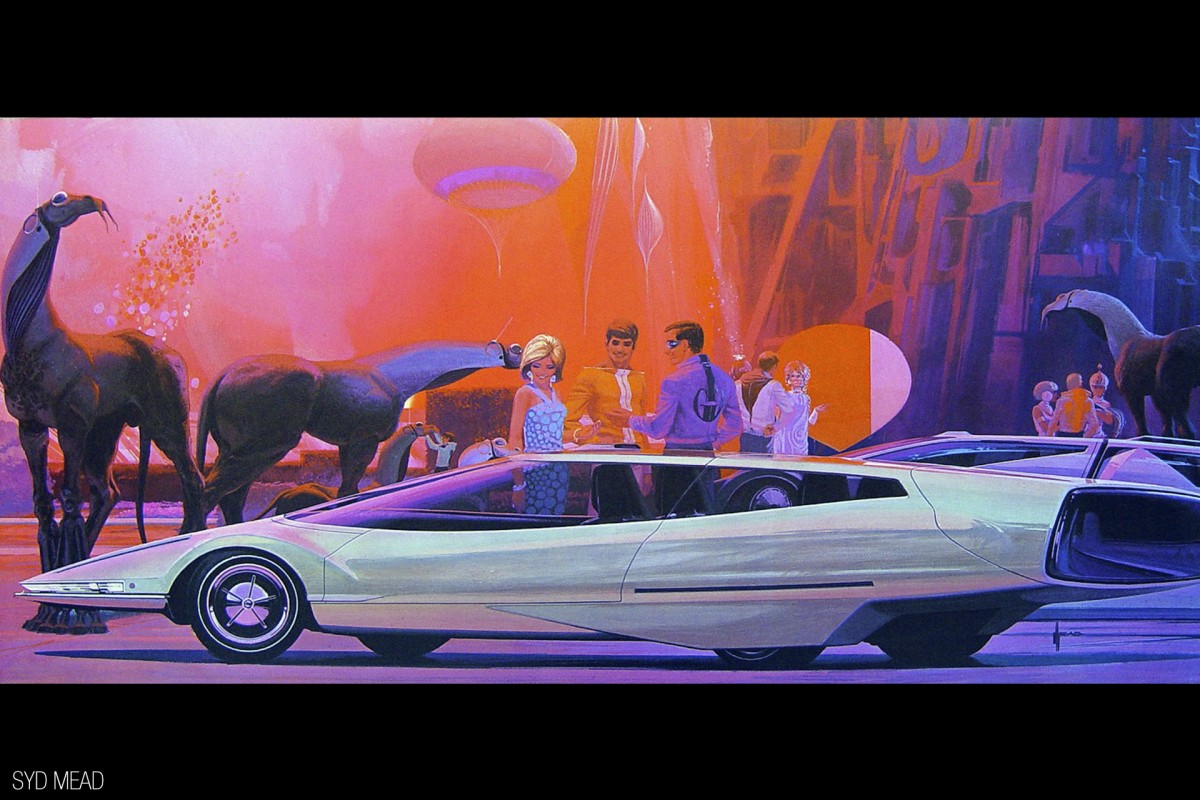
Jonathan: “That’s a ground-breaking book with amazing work in – expensive and difficult to find now. It seemed like there was nothing you wouldn’t turn your hand to after that. You did more industrial design, but so much more besides…”
Syd: “I worked with Philips and Volvo, and also with the Loewy studios in New York and Paris, collaborating with Raymond Loewy on the interior of the Air France Concorde. My engagements included cruise ships, super yachts, various transportation projects, wide-body aircraft interiors for heads of state, the entire product line of Philips professional and home products and architectural, editorial and advertising illustrations.”
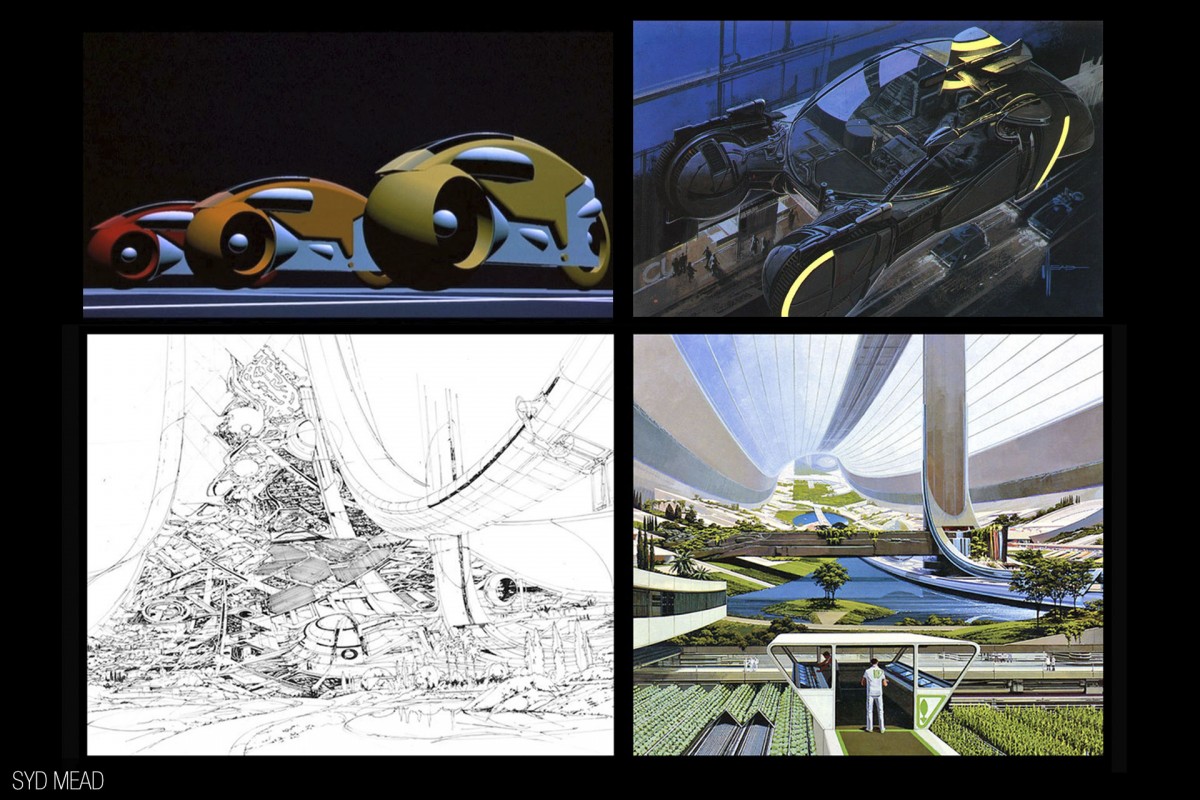
Jonathan: “But then you moved into the movie business, and the list of films you worked on is enough to give any sci-fi fan cardiac arrest. I mean, your first three films were Star Trek, Blade Runner and Tron. You defined the look not just of those films, but also effectively an entire genre.”
Syd: “The movie business was actually an adjunct. Though Blade Runner was an absolute turning point in my career, at the time it was just another job to be done. I was doing architectural rendering, flying back and forth to Europe, but it was my first film from pre-production to theatrical release. I worked on Tron as Blade Runner was being shot; Aliens came after that, then movies like Time Cop, Mission Impossible III and others. The last movie I worked on was Elysium.”
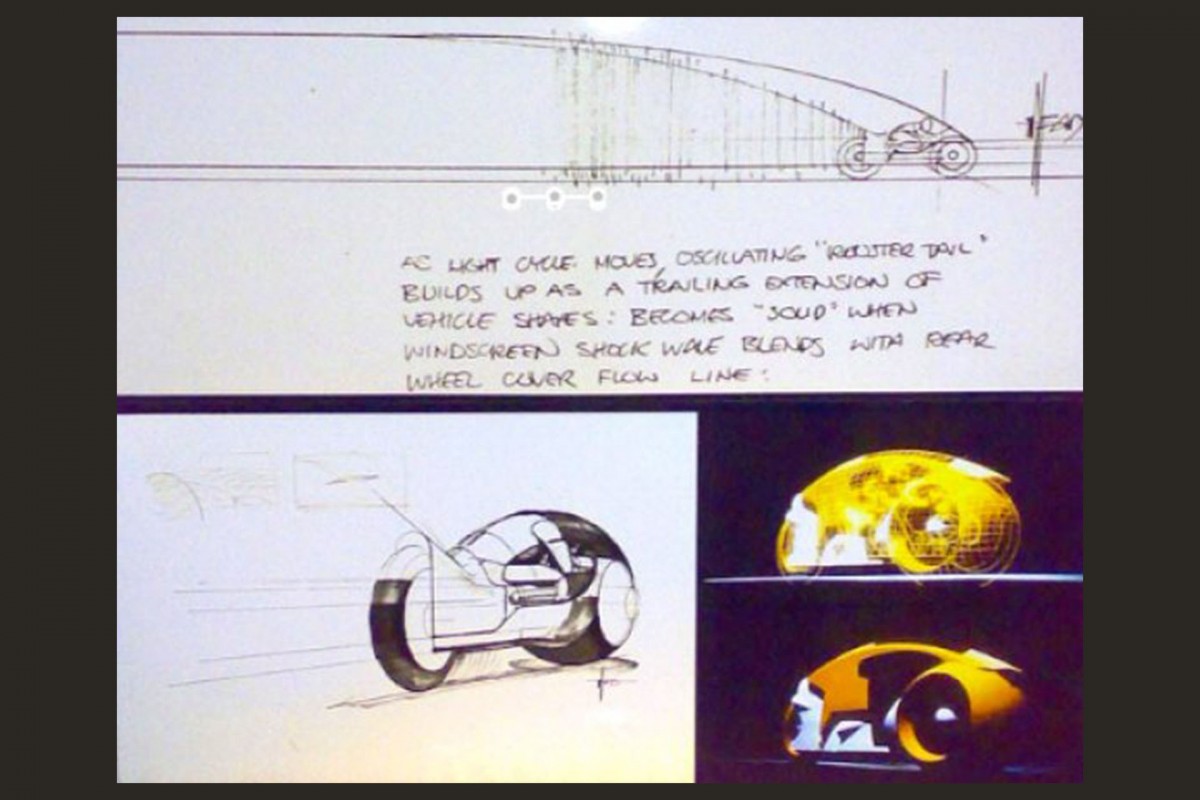
Jonathan: “Personally I worship at the altar of Blade Runner and dream of riding a light-cycle, but do you have a stand-out film you’ve worked on, where at the end you’ve looked at the world you’ve helped create and said, ‘That’s the one’?”
Syd: “The film that stands out in my mind as being one in which I was more viscerally involved was 2010: The Year We Make Contact. I had frequent meetings with the director, Peter Hyams at MGM; I was on the set a couple of times and knew what the whole process was about.”
Today is so yesterday
Jonathan: “Are there any cars that stand out for you as paragons of good automotive design? You seem to have touched on Le Mans racers over the years.”
Syd: “I continue to be interested in production, specialty and prototype designs. Some of the spookiest automobile designs are the old Delahaye roadsters. They seem to ‘float’ with their fully shrouded wheels. I admire the formidable Rolls Royce Silver Ghost-era cars with their visceral machine-ness, and the Bugatti Royales with their fantastic disc wheels with the ventilation detail near the rim. They achieve a delicacy of alignment and balance at a gigantic scale – an amazing accomplishment.
“I worked with Roy Lunn on the Ford ‘J’ car intended for Le Mans back in the ’60s: the Ford GT40s are now the ‘older’ format coupés but contemporary designs like the Audi R18 diesel introduced a new power plant type and the Bentley Speed 8 was a beautiful balance between high-function aerodynamics and a visceral machine aspect.”
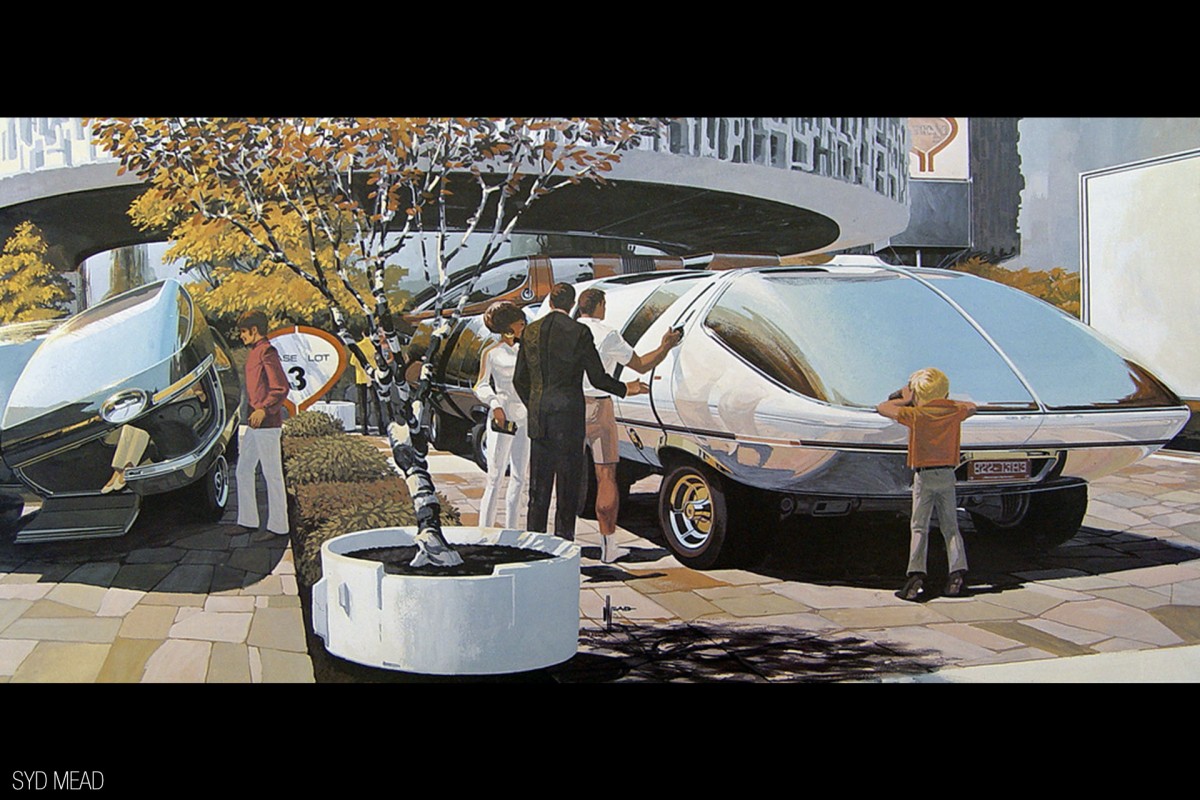
Jonathan: “I always love Asimov as he doesn’t specifically describe technology in minute detail – often he leaves the reader to ascribe their own experience and knowledge to create the mental picture. As a designer you don’t have that freedom, yet you still manage to produce designs which don’t look dated. They still look like the future; so what do you avoid when you’re creating new designs for futuristic vehicles?”
Syd: “I like the term ‘future proof’. Some of the Le Mans-format vehicle designs I did back in the ’60s still look comfortable alongside current high-end vehicles. The future is a morphed version of what is ‘now’. Because of my industrial design way of thinking, attributed to my time at Art Center, I can read or make up the story and then design the stuff that the story permits as technology, social format and general ambience. That way you create the image of a scenario that has recognizable visual cues and is overlaid with stuff ranging from simply ‘weird’ to reformatted versions of ‘now.’”
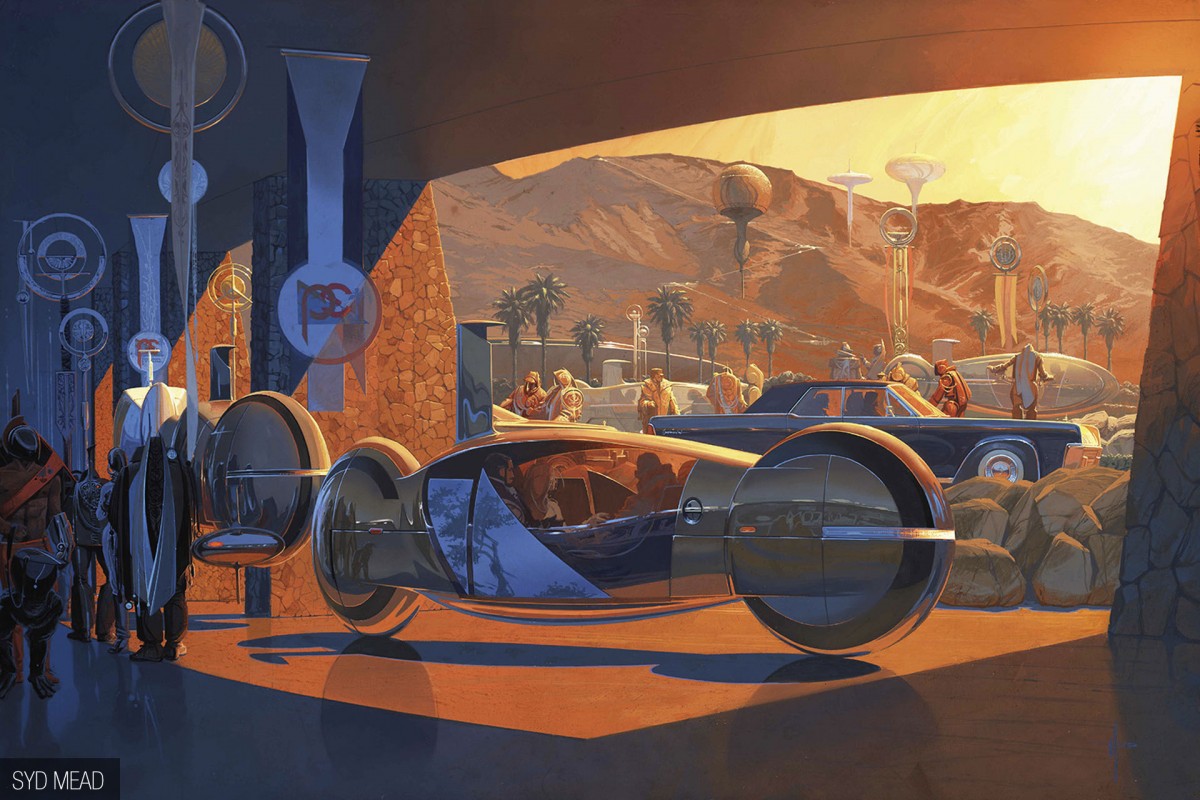
Jonathan: “It’s almost impossible to avoid influences as a design student, even though it’s an easy trap to fall into. But isn’t it important not to get trapped into one genre?”
Syd: “I enjoy keeping up with the front wave of technology. Technology describes our modern world. If you are hired to imagine futures you have be aware of what’s going on right now; to extrapolate and make up stories, illustrated by the matching design. Being trapped by ‘now’ is a hazard for those who get involved in a linear career. With a universal media feed, design fads go instantly horizontal, so in any competitive product design field cliché moves through whatever strata of designed thing is current. So current cars all have headlight glass crawling up toward the A-pillar, crazy boundaries for the tail light package and weird body contours that sometimes resemble a dropped pizza. Does anybody know anything about reflection phenomenon any more?”

Jonathan: “Car design seems to shift through set phases: the rocketships of the ’50s and the wedges of the ’70s for instance. But then everyone seems to settle into one design paradigm for a decade or more. How much do you think it’s down to industrial techniques and economies of scale (i.e. new materials or improved manufacturing ability) compared to a fear of pushing design boundaries? Is one more important than the other, and has this exacerbated the decline of the car’s popularity?”
Syd: “My attitude toward current production cars is very ambiguous. Some of them are so ugly and contorted, you marvel that they were deliberately made to look that way. The design process is responsible. The vehicle design starts as a tessellated mesh describing the volume that fits over the package. Then door and light package cuts and DLO (Daylight Opening) contours are mapped over this mesh. The result is a perfect fit of what can be nutty match-ups at material splits.
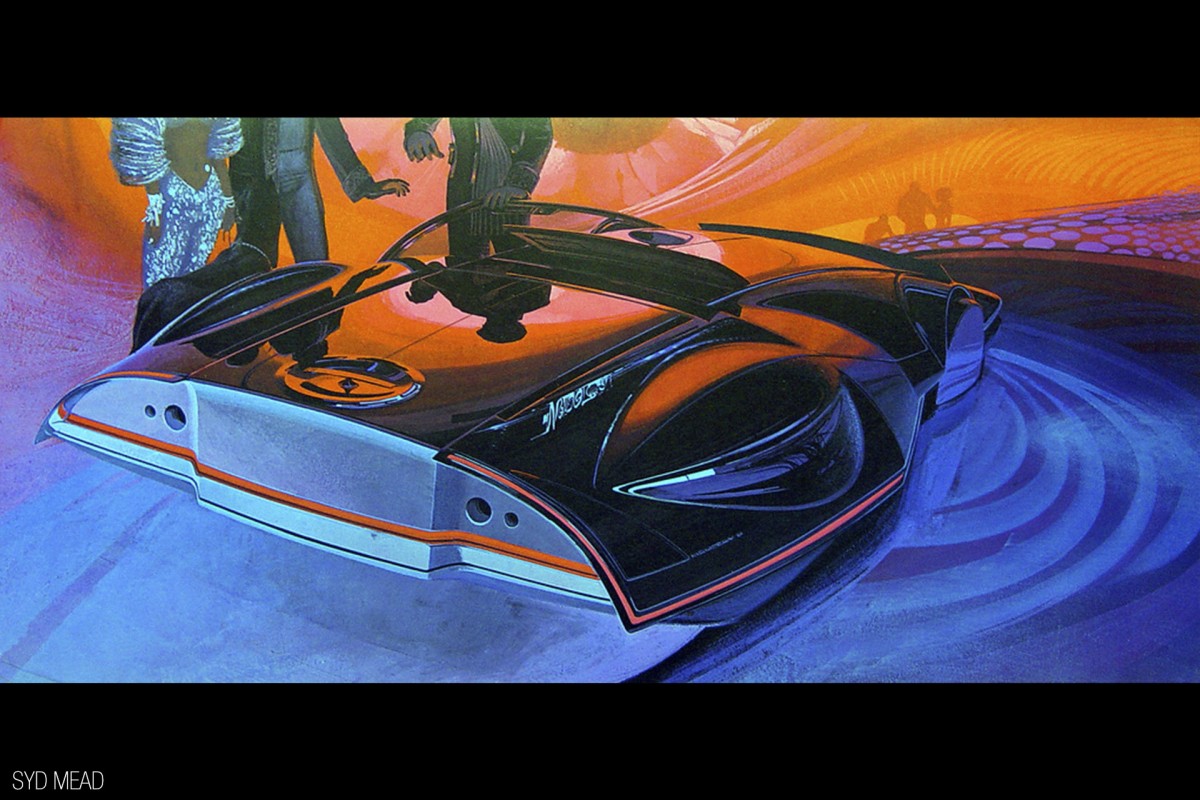
“The reason cars up to the late ’80s looked different is that they were assembled from components probably modeled in clay, then perhaps hardwood and cast or stamped. The divisions between body and doors, glass areas and exterior lighting packages look different because of the assembly process of different parts made from drawings, rather than from computer-generated specifications. Yes, the parts fit together perfectly but they can be ugly.
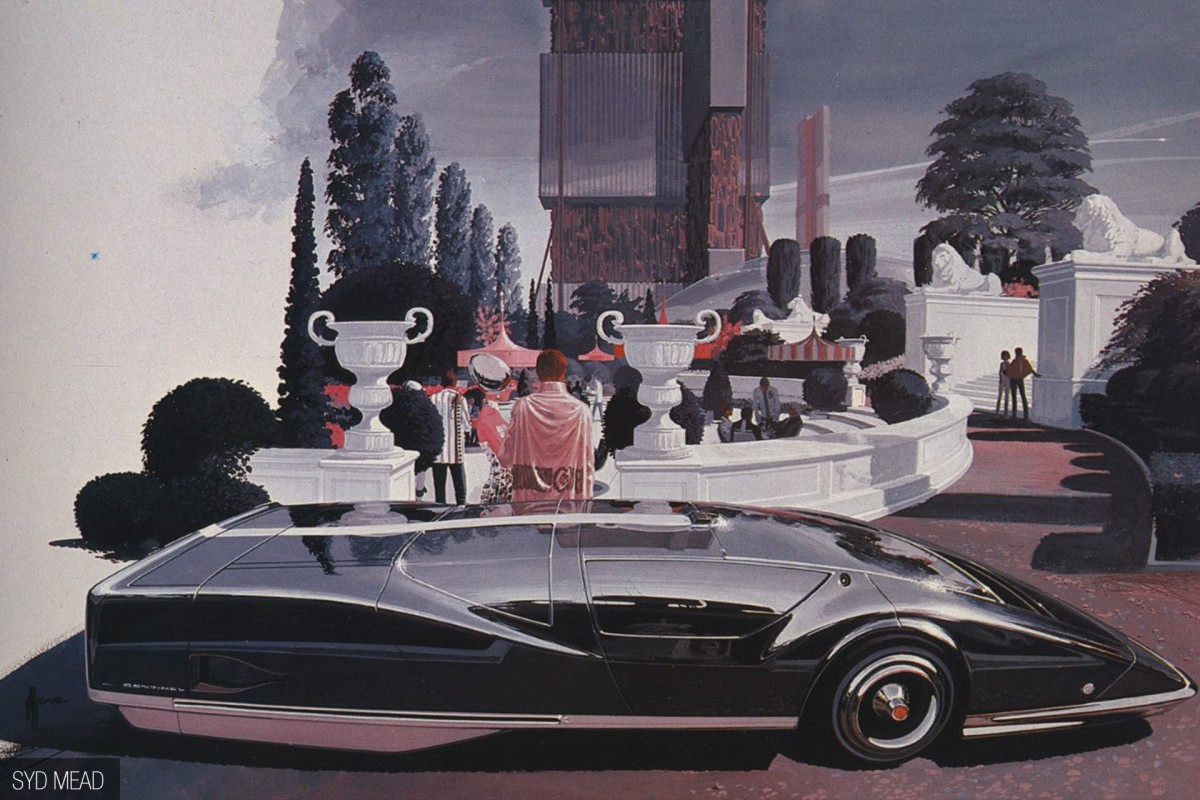
“Designing vehicles is an exercise in matching performance and utility with the various emotive prompts that cars stimulate. The current crop of vehicles for the general public look alike because they are a commodity. Higher-end vehicles up to and including something as preposterous as the Bugatti Veyron are an entirely separate automotive ambition – and they can be eerily gorgeous. Aston Martins are my favorites. I’m not fond of the extremely angled, graphical cuts and planes of the Lamborghinis and other high-end Italian taste. For instance, take the same sensibility and overlay it onto the Cadillac Ciel and you have twisted planes softly integrated into the overall shape; subtle but just as startling. Attention getting? You can also get attention with a three-headed calf.”
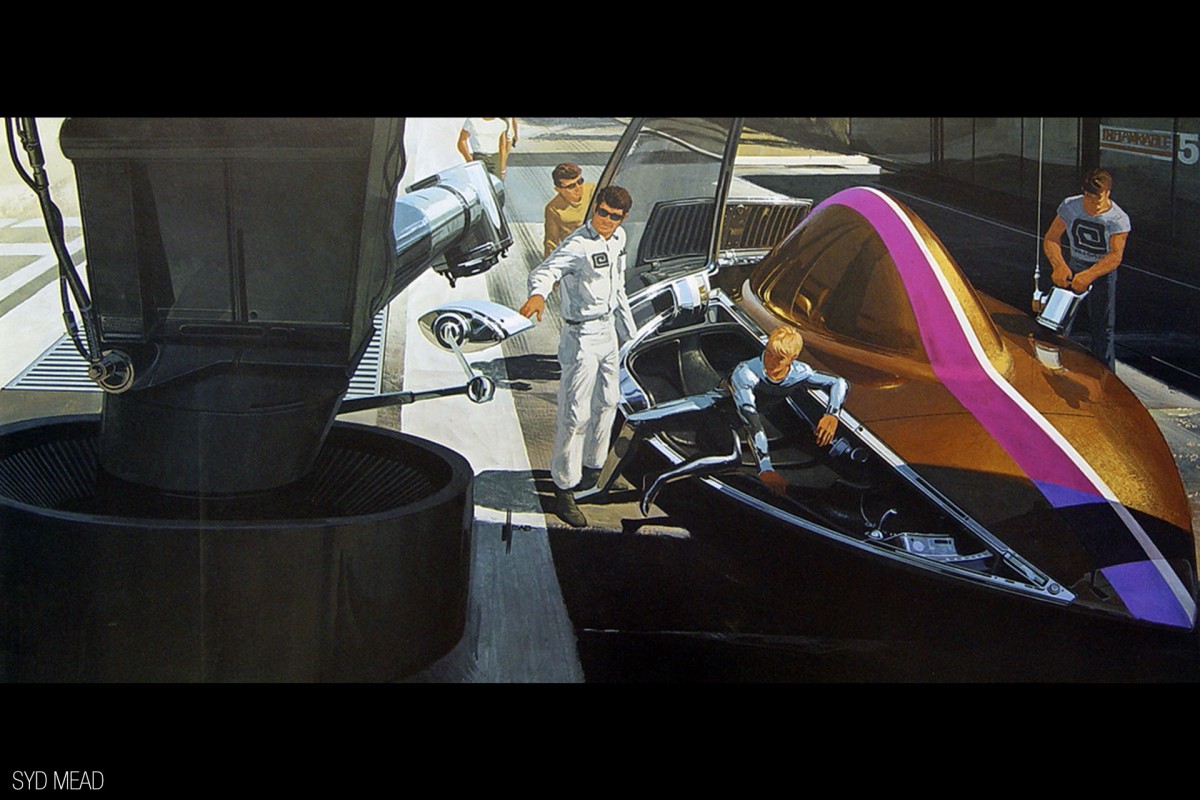
Jonathan: “With a declining interest in the car nowadays, the car as personal transport appears an ever more precarious economic prospect. Do you think that the car as a private but communal mode of transport is living on borrowed time? What’s coming next and how quickly will it arrive? Is it the ’sentient, super-evolved version of the horse’? And did you already sketch it in the ’60s?!”
Syd: “The future of the car as personal transport will morph into time/use formats probably owned either by municipal agencies, a variation of corporate rental schemes and rotating mileage based lease by single lessees. With 50 percent of the world’s population living in cities, I predict that a lot of high-density core urban mobility will be by moving platforms, sidewalks, escalators and lift platforms as architectural enclosures become larger and more interconnected. The autonomous car is almost here already, making ‘call, ride and forget’ a real personal transport factor.
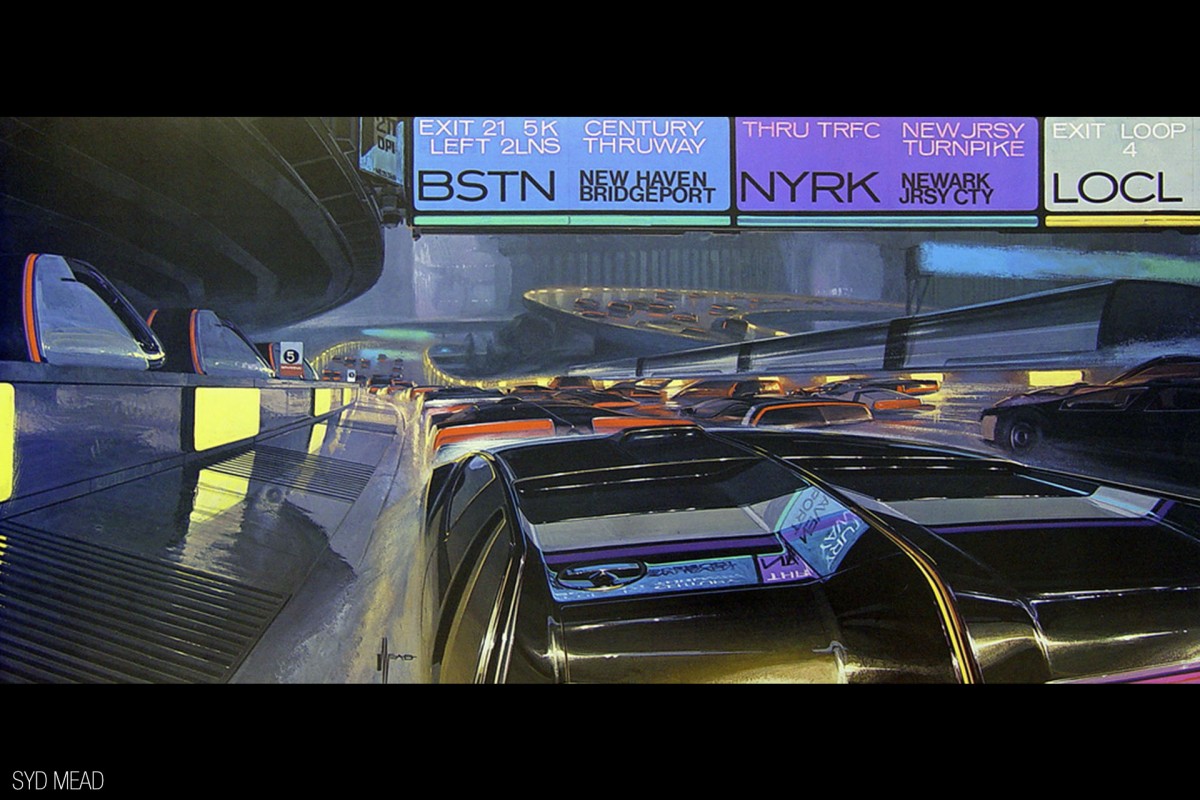
“So-called mass transit is the automobile. Bus systems, light rail and combinations thereof are subject to unionized strikes, expensive staffing costs and maintenance of route fixtures and machinery. Dial in aggressive riders who ignore rules of civility and you have a worrisome vector in public transportation. I sketched and rendered the ‘electronic herd’ concept years ago, depicting MTU’s (Mobile Transit Units) traveling in a bunch, thus creating a high-density use of existing thoroughfare routing.
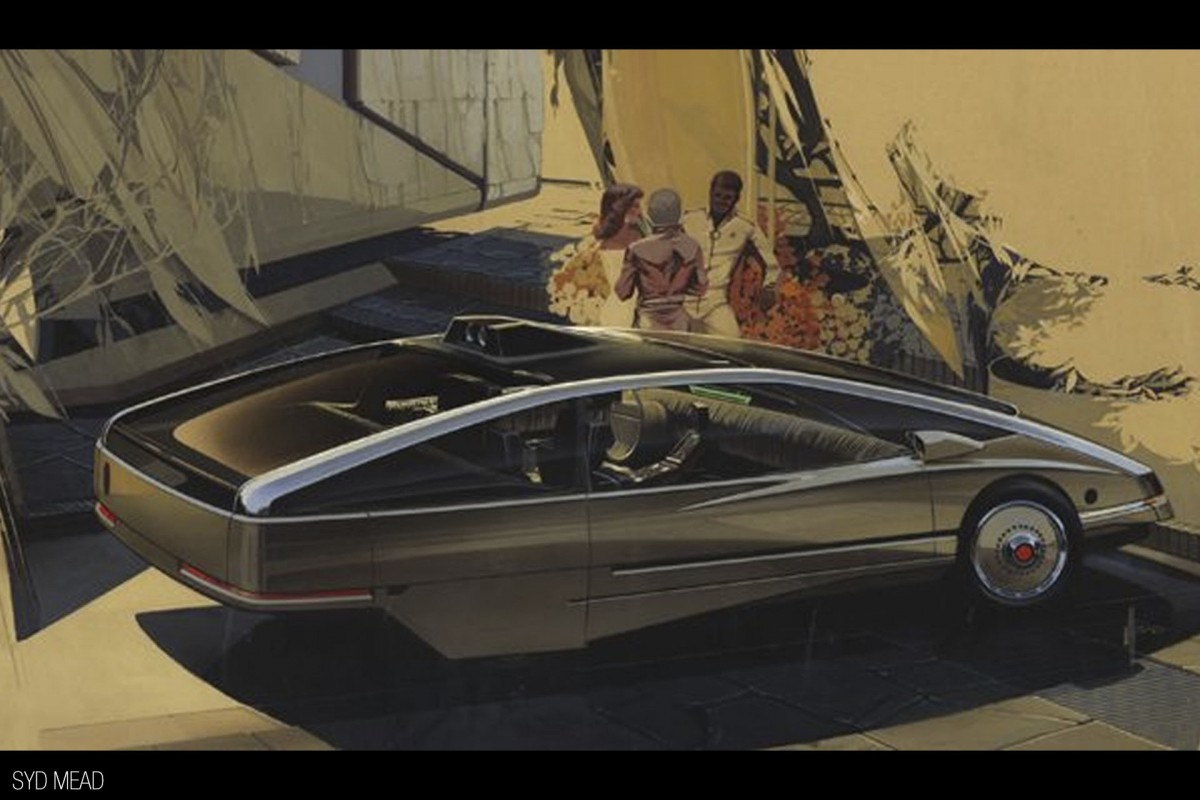
“The private automobile as a personal possession will certainly survive, but as an increasingly expensive proposition for those who choose, like now, to own a vehicle that sits unused for various periods of time. We have four vehicles in our ‘stable’: an ’03 Sebring convertible, an ’09 Cadillac DTS and two collector cars, a 1957 Mercury Turnpike Cruiser two-door with electric windows and the 1972 Imperial LeBaron four-door hardtop. Working at home, the two collector cars are operated maybe once every two weeks, the Sebring maybe once a month. The Cadillac is the most used daily driver and it has only 16,000 miles after almost five years of use.”
Pen in one hand, car keys in the other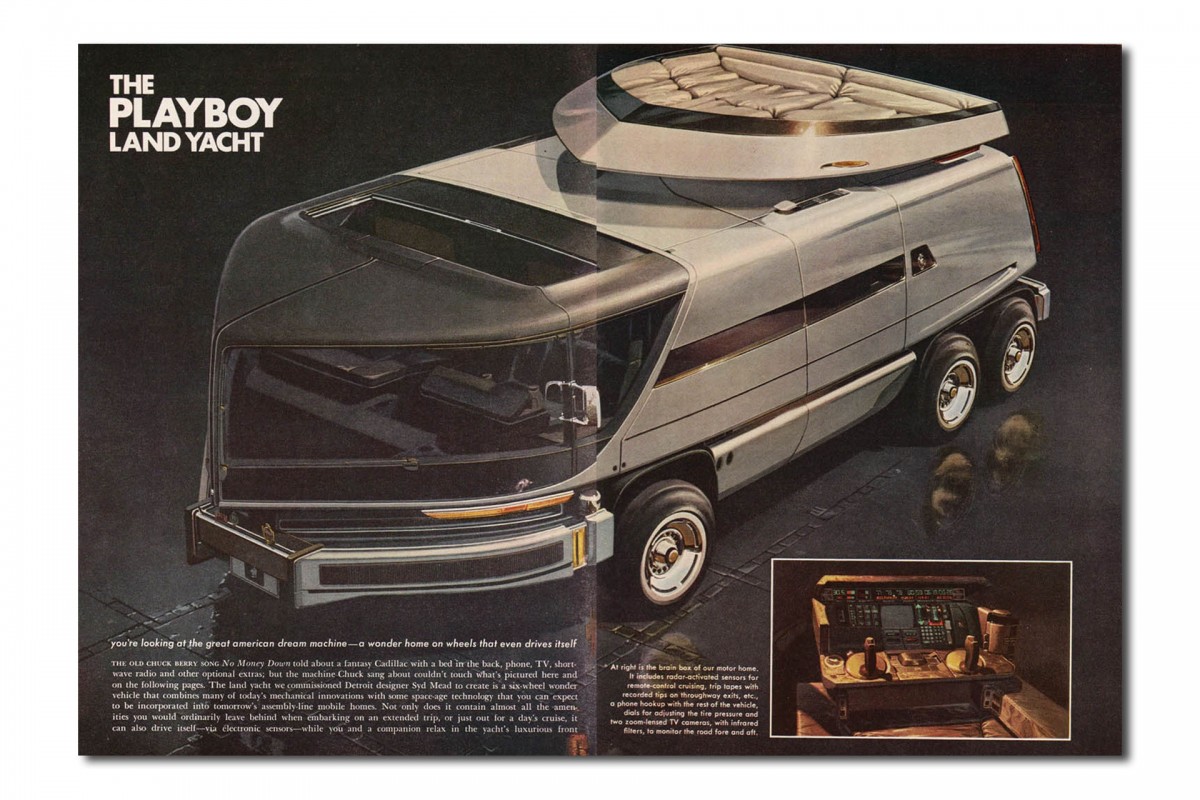
Jonathan: “You’ve always featured cars throughout your art career, but what’s your own relationship with cars in real life?”
Syd: “I enjoy driving and I’ve done several ‘great circle’ trips in cars over the years. I’ve driven my 1972 Imperial LeBaron on many club events – it’s a real experience compared to the technical progress evident in my 2009 Cadillac DTS. The ’72s were, at the time, top of the technology game in the luxury market, with front disc brakes, electronic ignition, the first (I believe) completely automated heating/cooling system and front torsion bar suspension. It’s not a sports car, for sure.
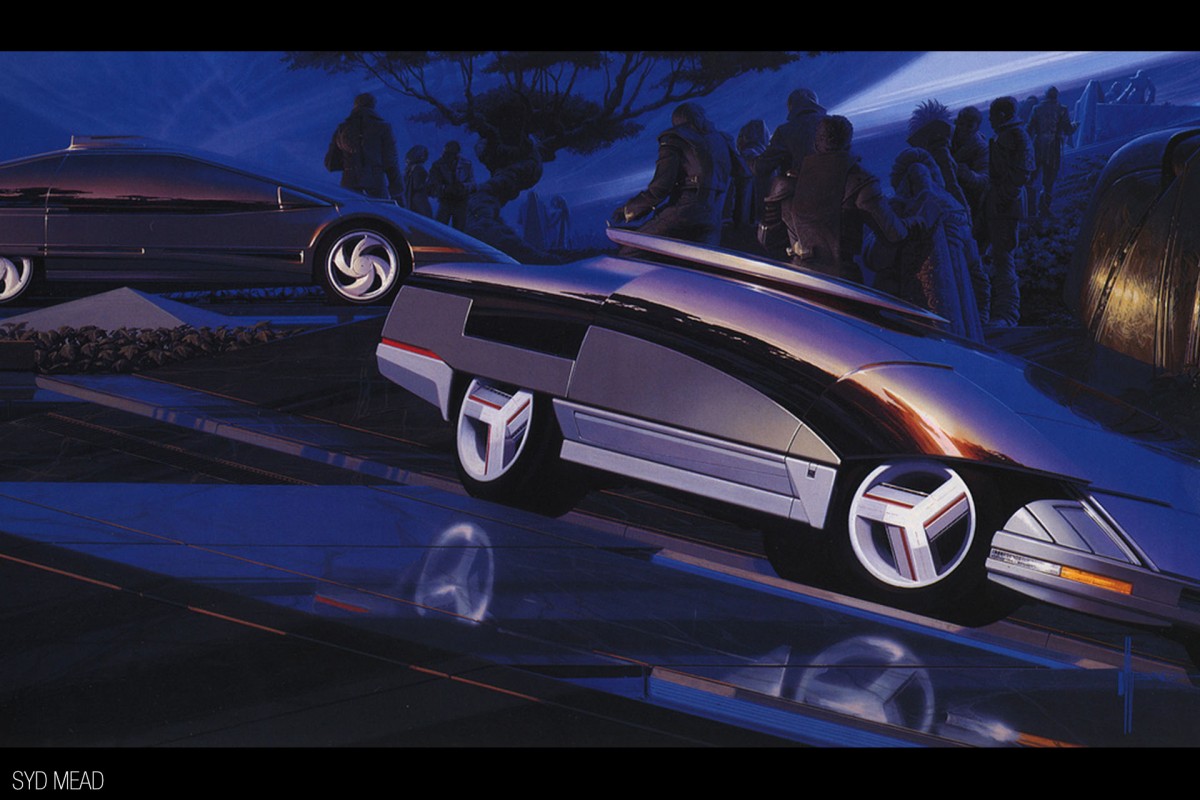
“I owned a Mercedes Benz 300SL Gull Wing coupé for 43 years. I bought the car in 1960 for $5,000 cash. The car was a special order with leather seats, a special grind cam which produced more torque to the redline and it was fitted with special-order Rudge center-lock wheels and geared for touring. I drove from Detroit to the Northwest Michigan town of Charlevoix in three hours flat just after they opened I-75. The road was not yet patrolled and we tooled along at about 140mph for a while.
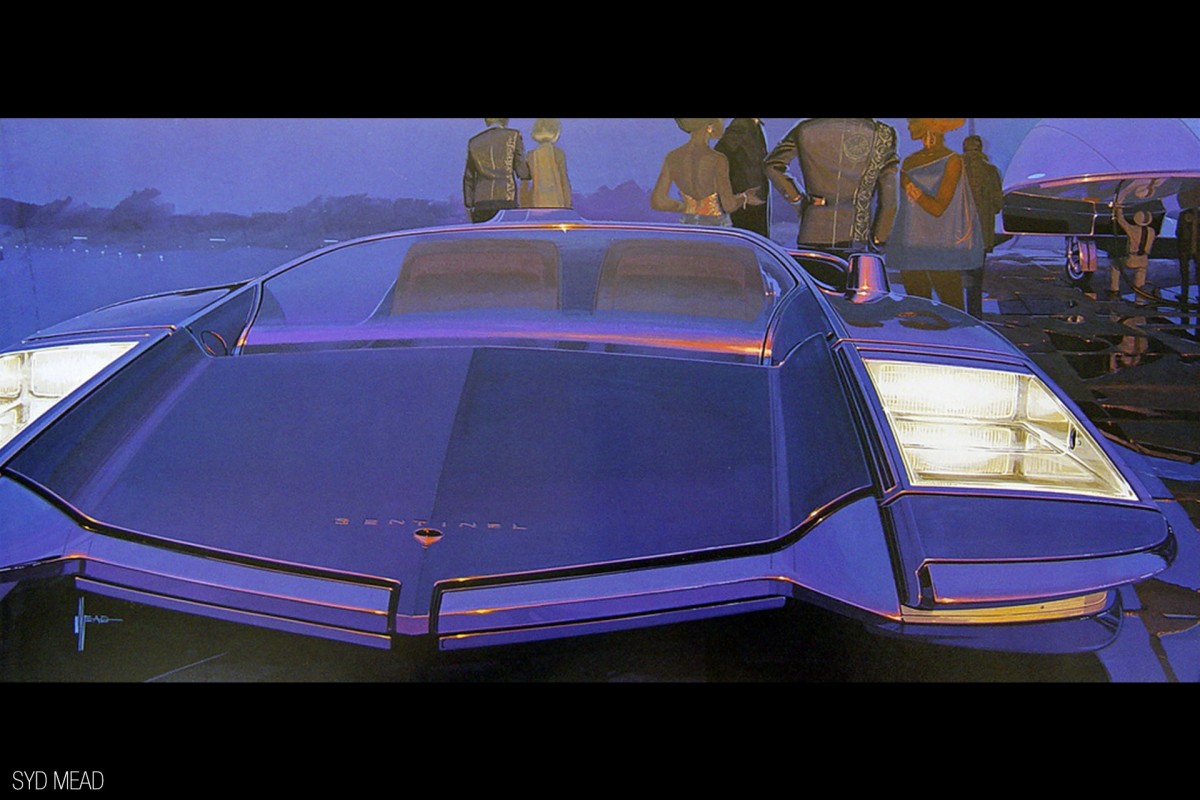
“The dangerous part was that with the almost perfect aerodynamics and glued-to-the-road stability, you really didn’t have much feeling of speed. I had the interior completely redone in 1992, with a new wiring harness also. I fitted the car with Marchal headlights and two Lucas ‘flamethrower’ driving lights at about 100,000 candlepower each, one a pencil beam aimed at the side of the road and the other one a flat beam straight ahead. You could drive in the rain and have perfect vision ahead.
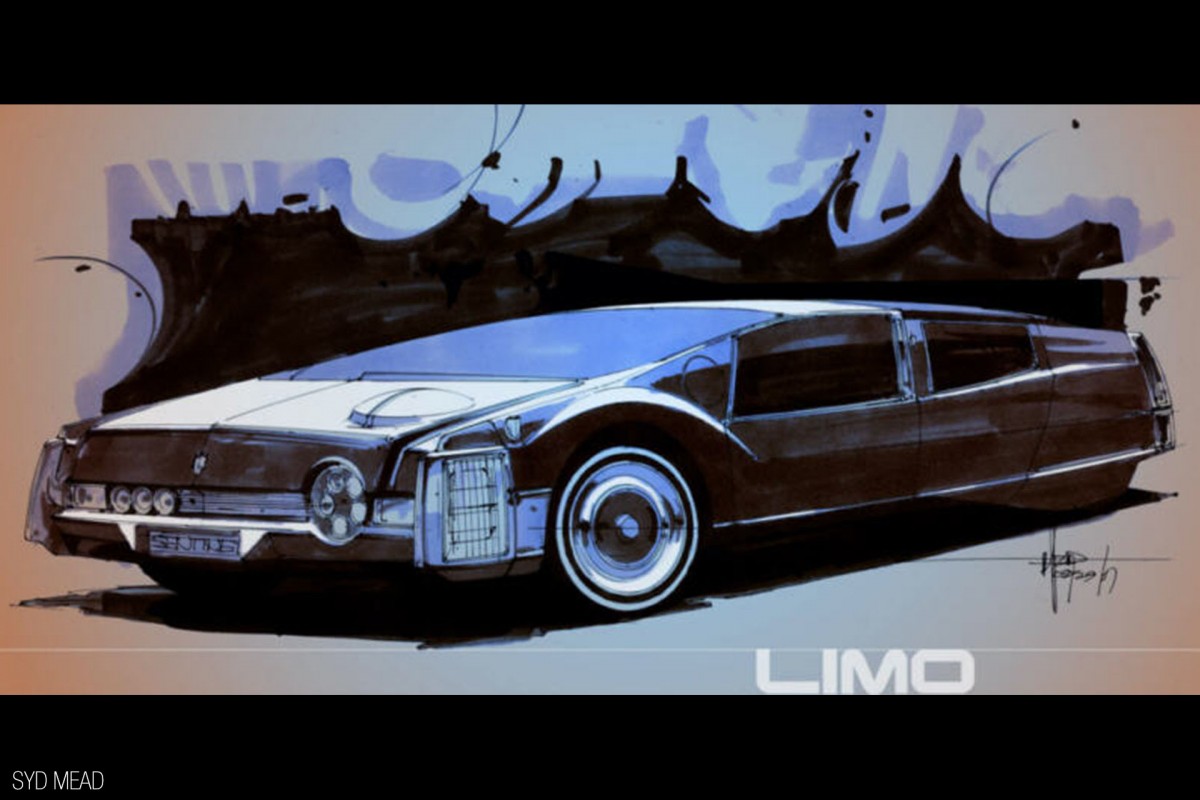
“My other favorite vehicle was a 1967 Lincoln four-door convertible, an immense vehicle, certainly two and a half tons plus. You could almost charge admission to watch the top go up and back down. Even the headrests were electrically operated. One misty, drizzly Michigan day, I was driving on an asphalt stretch of road out in the suburbs. The road was straight for several miles and flat. Out of curiosity, I put the car into a four-wheel drift and got quite a kick out of it. Wow! I did this several times and thought I was quite clever to bring it off. The last ‘big’ contemporary era Cadillac that I had was a 1994 Fleetwood Brougham that was ordered through Chuck Jordan. I drove that car for 11 years… a great road car: comfortable, big and a beautiful workout on GM’s last big body-on-frame series.
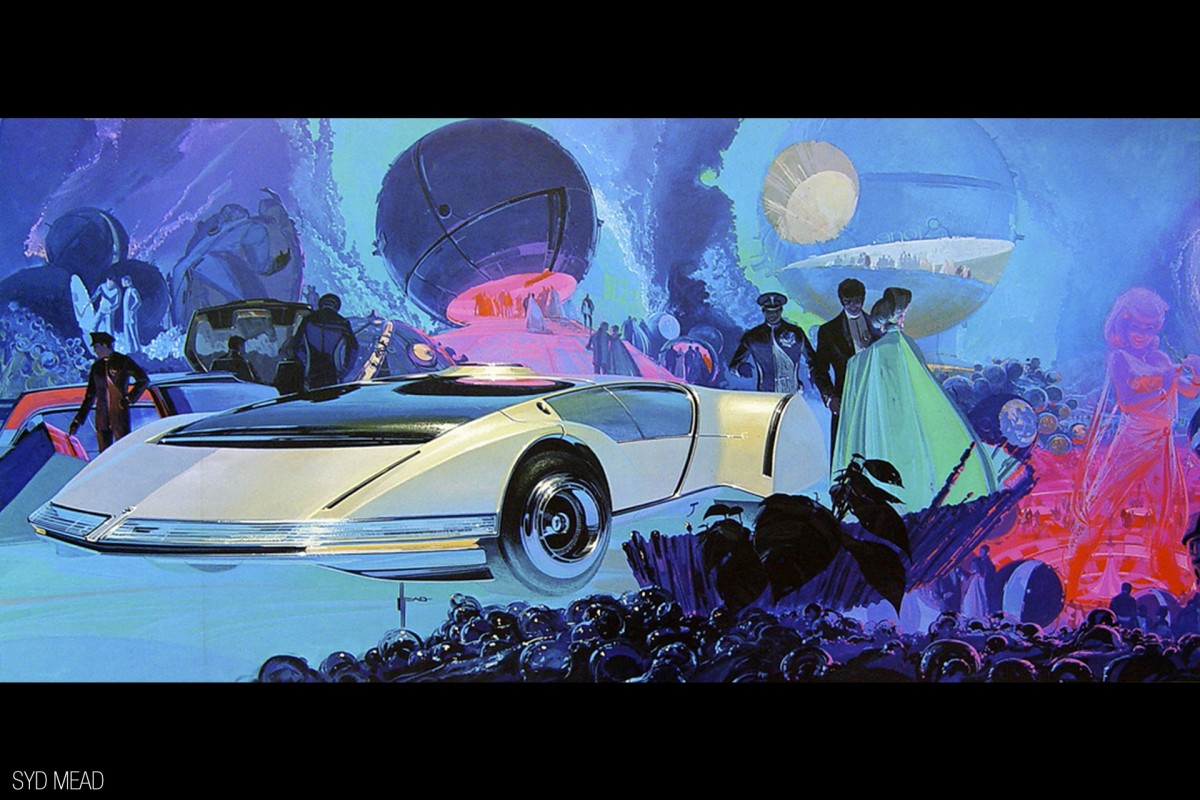
Jonathan: “You’ve carried on producing automotive concept designs throughout your career, like the beautiful Le Mans-style coupé (which reminds me of the Japanese Dome prototype of ’79) and Land Yacht, and general transportation concepts. Do you still draw cars?”
Syd: “I still sketch cars in my spare time. I always have some sort of format in mind. Currently, I’m working on rendering an ‘arrival’ scene, which I love to do. A foreground vehicle will have wheels and then the two middle-ground vehicles will be anti-gravity. My creative process always begins with the story. It can be a movie script, it can be a briefing from a manufacturer or a commission for a painting. I can then solve the problem following a progression of consideration that lets you evolve through several steps, retaining the charm of ‘wild idea’ and merging into solution.”
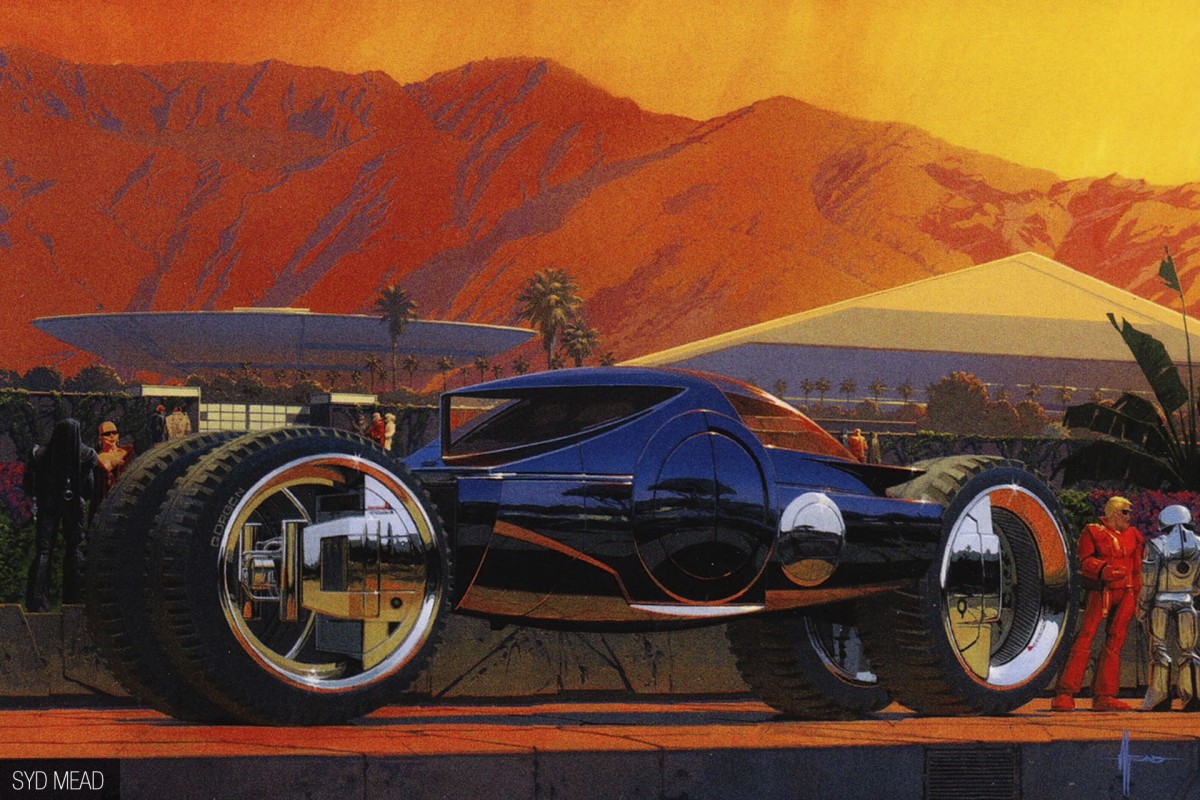
Jonathan: “Do you follow a particular process nowadays? Has technology made its way into your creative methods?”
Syd: “I start with small thumbnail sketches, then refine the best of those into larger, finished drawings using pen. After scanning in the ‘raw’ line drawing, I shade with grayscale felt-tipped markers. I then scan the shaded drawing to produce a digital version which can be colorized. The process is structured, but variable enough to suit whatever the problem happens to be.”
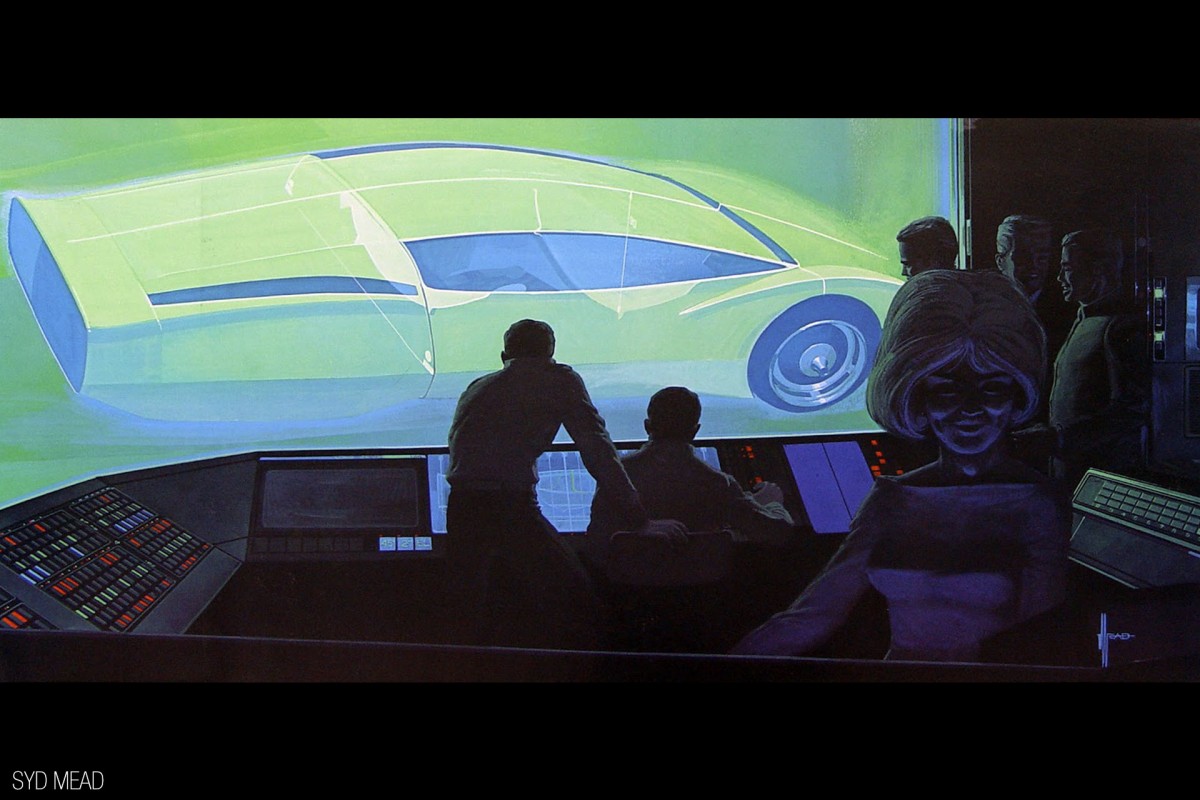
Jonathan: “I believe you keep an eye on talent in universities; I’ve heard you say that it’s about looking for people with ‘film in the camera’!”
Syd: “I enjoy my frequent presentation visits to university and professional audiences. There’s a fascinating age spread: people in a demographic that have grown up in a world as different from the one I grew up in, as someone in the late 1800s being dumped on the sidewalk in 2000. So, for me, it is a handhold to ‘now’ in terms of sensibilities that drive current design response to challenge.”
Jonathan: “You personally don’t look like you’ll ever stop pushing the boundaries, which in itself is inspirational. Is it about ‘being carefully crazy’, another phrase I’ve heard you use?”
Syd: “Pushing the boundaries is simply called ‘remaining competitive’ across the range of what people hire me to do. I’m slowing down, certainly, but I still get a thrill out of answering a challenge, either in design or illustrative commissions.”






Wow some nice pictures in here thank you for posting
Genius
Incredible
Fantastic. So good. Thank you for this.
Anyone into Syd Mead (presumably people who have made it to this comments section) should check out the Blade Runner Sketchbook: http://www.wired.com/underwire/2011/12/blade-runner-sketchbook/
A lot of extra detail conceptualised for Blade Runner that either didn't make it into the movie or doesn't really leap out at you unless you know it's there. My favourite is the rotary key (didn't make it in though).
This is the first time I see such post in a mainstream automotive blog. Very interesting interview. Thanks for sharing Jonathan.
@Seeking Perfection Glad you like it
I've been inspired by Mr. Mead's genius since I was a kid... Some nice insight, and fantastic imagery. Thanks for the great read!
The automobile industry has made a successful turnaround after the bailout and re-structuring package. The big 3 automobile companies have increased their overall sales volume and profits. During the year 2012,GM and Ford each is expected to sell 13.5 million new vehicles in the United States. The economic downturn in Europe has affected car sales dramatically in that part of the world. Employment in the automobile industry has indicated some job lost but not significantly. The car industry looks relatively strong despite high gas prices nationwide. The new and used car marketplace seems to be healthy and vibrant. <a href="http://3dayauto.com/"_blank">3dayauto</a> marketplace is primarily the used car marketplace for resale. We provide auto tips and techniques for all vehicles domestic and foreign at all price points including luxury cars. 3DayAuto is the only company in the United States providing this unique type of service for the used car market.
Absolutely Wonderful
some people are just born with it.
Wow. Not an article I was expecting to see here, but a very interesting read. Great work!
This was awesome. Thank you for making this interview.
Mind opening art work and great interview. Nice work SH!
Wow, my favorite artist featured on one of my favorite auto-centric sites. I certainly did not see that coming but would not mind if it continued moving forward.
Jonathan is also responsible for the extremely high quality of this post since he asked very good questions and challenged Mr. Mead in answering questions I had not heard from the artist before. Well done Jonathan... I believe you have raised the intellectual bar here at Speedhunters just a bit and the site is better for it.
Erik S. aka Aktifspeed
The most mond-blowing article ever featured on SH. This guy's quotes are absolute genius. He really lives in a different world than us. I've seen this guys work my whole life but never knew who he was. The designs in his oldest drawings are still miles ahead of what anyone sees in the most futuristic prototypes at the auto shows. His visions have literally been made our reality. WOW.
THANK YOU SPEEDHUNTERS.
Jonathan, you post the greatest stories. This one, and the Matra and Alpine. They just keep getting better.
I work full-time as an automotive journalist and am inundated with car stories, good and bad, every day. I do get sick of them. But I always make time to read your stories here.
Well done, and thanks.
-Matt
Fine post sir! Made for a very interesting read.
But just a thought here, he says "I'm not fond of the extremely angled, graphical cuts and planes...";
I felt like most of his concepts do have similar design aspects.
Fantastic post, nice to see something related but completely different!
D1RGE If you'd like your mind to continue to be blown google Daniel Simon.
As a product design student , I was doing some moldboard studies yesterday and i included a lot of Syd Mead's work , it's crazy that after a hard day in uni I came back to have a look at speed hunters And there's a 3 page spread on him , I absolutely love the fact that he still uses old school techique in his illustrations rather than PC , in my opinion you can never get the 'wow' factor with designing or drawing with CAD software, it just doesn't feel right , and with more and more people in the industry using CAD, the old school viscom stuff just seems to be dissapearing slowly. So keep rocking us with your talent mr. Mead !
Great article keep it up SH
AceAndrew2 D1RGE
Beat
me to it. Cosmic Motors always provides inspiration. His new book Timeless Racer
is astonishing...
This whole inspiration theme you have going on is amazing, I need to start reading SH when I wake up, not when I go to sleep! Minds racing with ideas.
Ashthorp He spoke at my school about illustrating, design, and went into depth about Blade Runner. Very inspiring guy.
tragicsunshine very smart, curious, inquisitive man. I have been trying to get him on the podcast. Hard to get a slice of his day
ZarkoBelogrozdev I suggest you to get a copy -if you didn't already have it- of "The Techniques of Syd Mead Vol I,II,III,IV"
Jonathan, thanks for doing the piece. Fantastic (literally) questions and subject matter. Bryn, thanks for the "vision thing" in your editorial perspective. Goodness is flowing on SH!